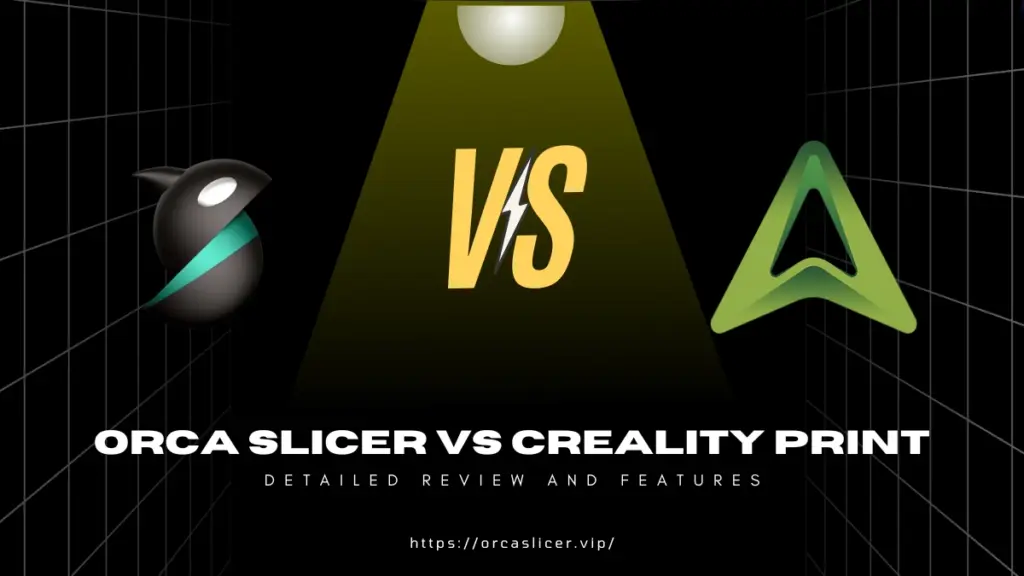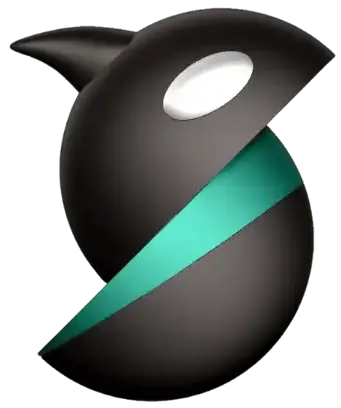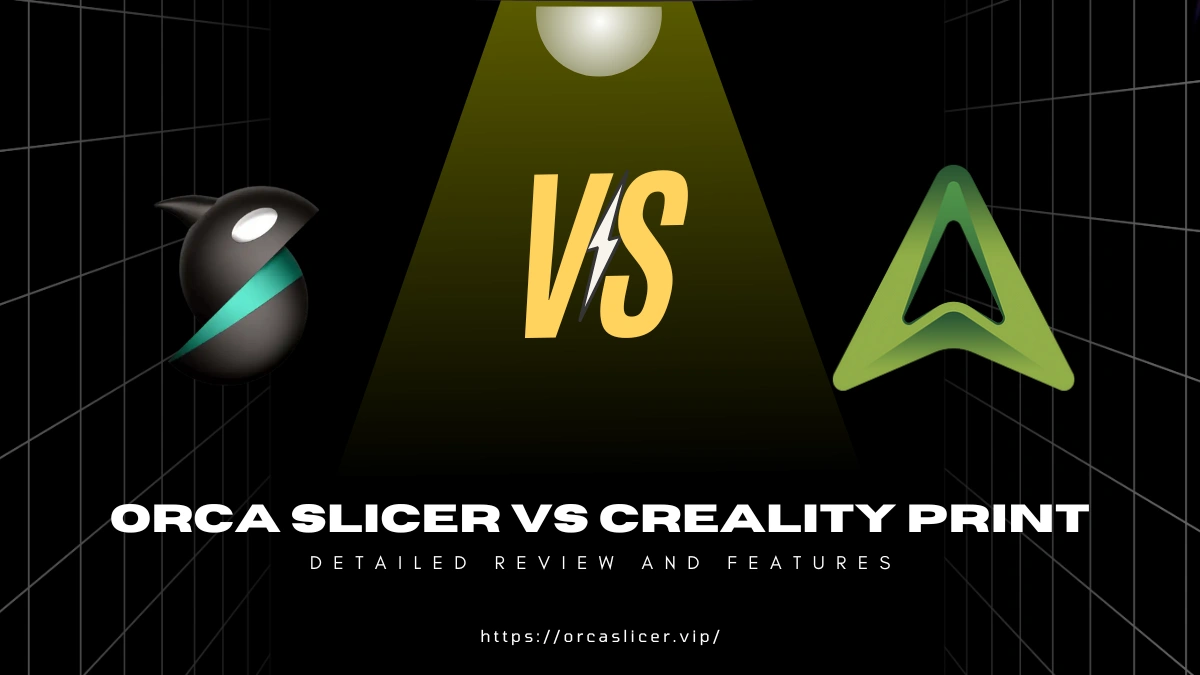Orca slicer vs Creality Print: Detailed Review and Features
If you are doing a deep dive into the world of 3D Printers & Slicers, then you should keep reading. In this post, we will explain about Orca Slicer and Creality Print. We will compare these two Slicers. From simple definitions to key differences in between these, from pros & cons to when to use which, we will explain all of that in this article. So, if you are here to know which one is better? You landed right.
Orca Slicer and Creality Print are both Slicer programs designed for specific needs. Orca Slicer is community based Slicer based on Bambu Slicer & Prusa Slicer, with built-in calibration tools, advanced tools, and hundreds of printer profiles. Creality Print, on the other side, is Creality’s own Slicer program, invented for Creality Printers specifically, and it’s based on Orca Slicer. For Creality printers, this Slicer is very simple to set up and initiate good prints.

Overview of Orca Slicer
Orca Slicer is popular because of its advanced features and user-friendly interface. Getting free updates from time to time is another reason people love it. It supports Bambu Lab Printers amazingly while also supporting hundreds of others including any FDM Printers available in the market.
Orca is available on Windows, macOS, and Linux platforms. There are no hidden charges in it. You can also get alpha updates (Nightly builds) of it and experience some craziest features too.
It supports STL/OBJ/3MF and many other 3D Model files, while providing a safe way to download through GitHub official pages. Its some of the great features are:
Overview of Creality Print
Creality Print is a Slicing & printer-control software by Creality for FDM & FFF 3D Printers. As other Slicers, it’s also designed for importing 3D models such as STL/OBJ/3MF, etc. and slice them into thin layers, and then generate G-code, and send it to the printers for 3D Printing.
Creality Print is an open-source program, available on Windows and macOS, however you can download an Appimage for Linux from its GitHub repository.
It supports STL/OBJ/3MF and many other 3D Model files, while providing a safe way to download through GitHub official pages. Its some of the great features are:
Feature Comparison
Features | Orca Slicer | Creality Print |
|---|---|---|
Control & Customisation | Better control & customizations with Advanced calibration tools | Easy to use with Creality Printers with less efforts for good prints |
Ease of Use / Beginner-friendly | Requires deep understanding of advanced tools & takes time in learning | Very User-friendly with easy printer Setup for good prints |
Feature Update & Community | Regular updates, active community, open-source program | Regular updates, Creality Print is now based on Orca, open-source program with active community, and latest updates |
Default Profiles & Presets | You need to adjust settings according to your printers | Good Presets settings for Creality Printers, Easy to get decent output without any hard work |
Performance / Speed | Good performance but sometimes laggy | Same as Orca Slicer |
Compatibility | Broad Printers Support, works great if you are working on multiple printers altogether | Only optimized for Creality Machines |
Risks | If you don’t have knowledge, you can misconfigure settings and get poor results, that’s why it needs deep knowledge | Less risks as there are good enough Preset options already added for Creality Printers |
Orca Slicer Pros & Cons
Pros: Orca is a great Slicer program and best designed for experts who care about decent print qualities. Lots of advanced tools are there to use. It’s great if you have non-Creality Printers, because it gives long-term flexibility. Regular updates is another reason of why you should love it. With hundreds of printers support, you can use it with multiple printers together.
Cons: Importing printers & profiles sometimes gives errors. It doesn’t save filament temperature, and other important print settings sometimes while restarting. With complex models, it can crash. Because of Over-extrusion, print quality affects sometimes. Orca Slicer needs a decent computer to work nicely, if you have less RAM or a less powerful CPU, it can crash with complex 3D prints. Because of advanced settings, it takes so much time to learn as compared to many other 3D Slicer Programs.
Creality Print Pros & Cons
Pros: It works great with Creality Printers and offers pre-made profiles and even remote control settings. It’s an open-source program available on Windows, macOS, and Linux. You can use pro settings such as multi-color & multi-material. The performance is really good in slicing.
Cons: It’s not for expert users because of lack of advanced features. It doesn’t support non-Creality Printers most of the time. Sometimes there are errors while using the advanced features such as Multi-color and Multi-material. It shows misconfiguration.
Which One Should You Choose?
If you want more Calibration tools & Settings, more freedom, you can use Orca Slicer. Creality Print is based on Orca Slicer now. But if you have a Creality Printer, then Creality Print should be your good choice for effortless Setup and default settings. Also, there are so many presets for Creality Printers, so, it’s easier to get great printing results without any calibration tools knowledge.
However if you have multiple brand printers, and looking for your only one Slicer program to handle them perfectly, Orca Slicer is a good option. It can handle multiple printers at once, but you will need to set up the printers first, learn basic knowledge of calibration settings, and much more.
FAQs
Conclusion
Orca Slicer and Creality Print, both are awesome in their own ways. You should try both of them. But if you have a Creality machine, you should definitely try Creality Print. Because of ready-to-use Presets, it gives awesome prints without any customized settings. While Orca is also great for non-Creality printers and for users who needs so much control over various print settings.

